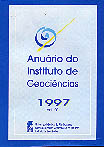A cidade do Rio de Janeiro e as chuvas de março/93: (des) organização urbana e inundações
DOI:
https://doi.org/10.11137/1997_0_55-74Abstract
The mountainous arcas of Rio de Janeiro act as water divergent areas, converging to the valley-flats. In the last decades, urban expansion has advanced fastly to still forested upward lands, mainly on the north slope of the Tijuca Massif, where numerous "favelas" are located. Changes in the slopes and valley-flats hydrologic behaviour generate major runoff budgets. So major flows-sediment's and flows-garbage's concentrations into the drained valley-axis, naturally or artificially (channels and pluvial tubulations), spreading inundations on the respectives street of the districts's major density population . The Joana, Maracanã and Comprido basins studied in detail show that the mud-flows and garbage-flows concentrate on the knick slopes and the floods on the valley-axis. These events are aggravated by the cumulated rainstorms due to the inadequacy of the urban pluvial drainage system.Downloads
Download data is not yet available.
Downloads
Published
1997-01-01
How to Cite
Cambra, M. F. E. S. and Coelho Netto, A. L. (1997) “A cidade do Rio de Janeiro e as chuvas de março/93: (des) organização urbana e inundações”, Anuário do Instituto de Geociências. Rio de Janeiro, BR, 20, pp. 55–74. doi: 10.11137/1997_0_55-74.
Issue
Section
não definida
License
This journal is licensed under a Creative Commons — Attribution 4.0 International — CC BY 4.0, which permits use, distribution and reproduction in any medium, provided the original work is properly cited.















